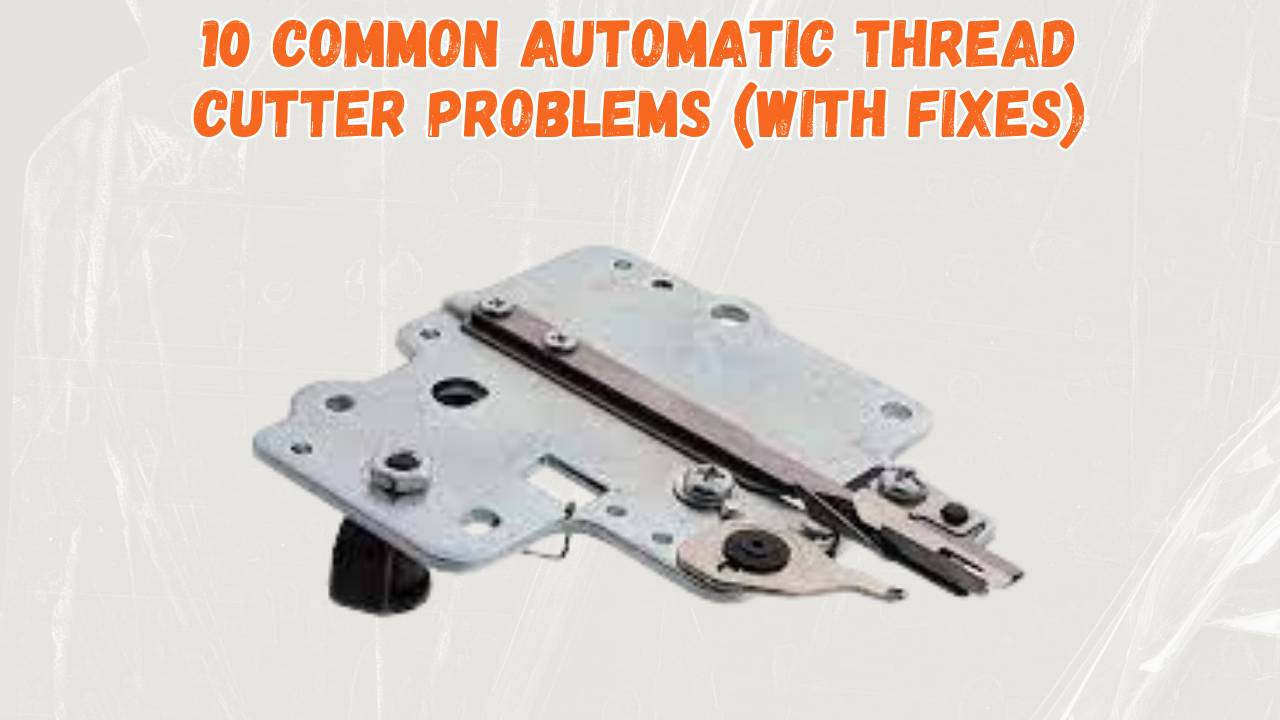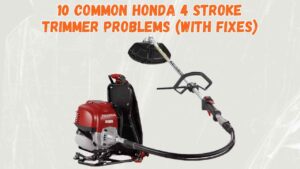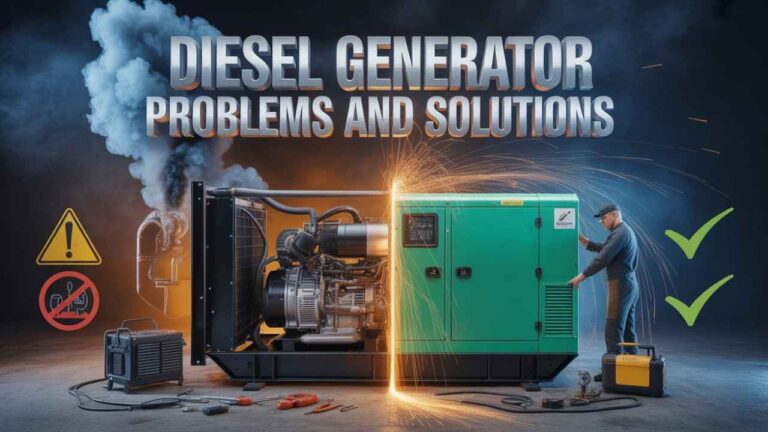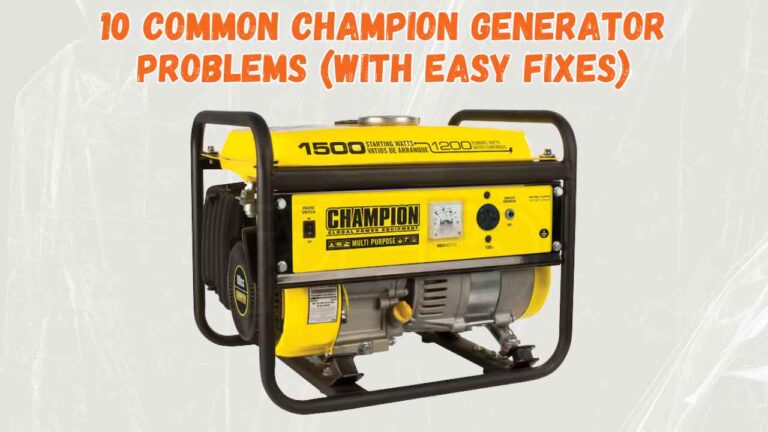Struggling with your sewing machine’s automatic thread cutter? You’re not alone!
Automatic thread cutter problems can be frustrating, from uneven cuts to complete malfunctions.
But don’t worry, most of these issues have simple fixes. In this guide, we’ll walk you through 10 common problems and how to solve them, so you can get back to sewing smoothly in no time.
Automatic Thread Cutter Problems (Short Overview)
Having trouble with your automatic thread cutter?
Common issues include threads not cutting cleanly or the cutter jamming during use.
Regular cleaning, proper threading, and checking for blade wear can help fix the problem. Stay proactive to keep your sewing smooth and hassle free!
Read 10 Common Problems With Fixes In Easy Ways…
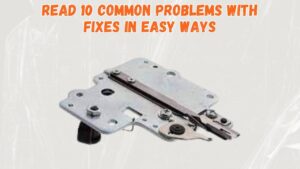
1. Thread Not Cutting
One common issue with automatic thread cutters is when the thread fails to cut properly, leaving uneven or untrimmed ends that disrupt workflow.
This can be frustrating, especially during high-precision tasks. Below are the causes and fixes to address this problem effectively:
Causes
- Blunt or damaged cutter blades.
- Incorrect thread tension or alignment.
- Dirt or debris clogging the mechanism.
Fixes
- Replace or sharpen the cutter blades.
- Adjust thread tension and ensure proper threading.
- Clean the cutter and surrounding area regularly to keep it functioning smoothly.
2. Cutter Jammed
A jammed automatic thread cutter is a common issue that can interrupt your sewing flow.
Causes
- Thread buildup or lint clogging the cutter.
- Using low-quality or thick threads unsuitable for the machine.
Fixes
- Turn off the machine and carefully remove any trapped thread or lint.
- Use a small brush or tweezers to clean the cutter area.
- Check your thread type and switch to one recommended by the manufacturer.
3. Blunt Blade
A dull blade is one of the common issues with automatic thread cutters.
When the blade loses its sharpness, it struggles to cut threads cleanly, leading to frayed or uneven cuts that can disrupt your sewing process.
Cause:
Blades can become blunt over time due to frequent use, wear, or cutting dense materials repeatedly.
Fix:
Replace the blade with a new one or sharpen it, if possible. Regular maintenance, like cleaning off thread debris and lint, can also help extend the blade’s lifespan.
4. Misaligned Cutter
A misaligned cutter is a common issue with automatic thread cutters.
When the cutter is not properly aligned, it may fail to cut the thread cleanly or could damage the thread entirely, causing frustration during use.
Causes
- Wear and tear from prolonged use
- Incorrect positioning of the cutter
- Accumulated debris obstructing the cutter
Fixes
- Regularly inspect and clean the cutter to remove debris.
- Realign the cutter as per the machine’s manual instructions.
- Replace the cutter if it shows signs of damage or excessive wear.
Read Also:
Honda 4 stroke trimmer problems
5. Thread Tangles
Thread tangles are a common issue with automatic thread cutters, causing frustration and delays.
Cause:
Poor thread tension, dull or misaligned cutting blades, or improper threading can create tangles.
Fixes:
To resolve this, check the thread tension, ensure the machine is threaded correctly, and clean or replace the cutting blades if they are worn out.
Regular maintenance can prevent this issue and keep your machine running smoothly.
6. Motor Malfunction
A faulty motor is a common issue with automatic thread cutters. This can cause the thread cutter to stop working or cut threads unevenly, disrupting your sewing process.
Causes
- Overheating from prolonged use
- Electrical faults or wiring problems
- General wear and tear over time
Fixes
- Allow the machine to cool down between extended uses
- Check and repair any damaged wiring or connections
- Replace the motor if it’s beyond repair or too worn out
7. Dust Accumulation
One common issue with automatic thread cutters is the buildup of dust and lint, which can interfere with their performance over time.
Dust can clog the mechanism, causing the cutter to jam or operate inconsistently, leading to frustration during sewing projects.
Cause
Dust and lint are often generated from fabric and thread during sewing, and without regular cleaning, they settle into the cutter’s intricate parts, disrupting its functionality.
Fixes
To fix this, clean the thread cutter regularly using a small brush or compressed air to remove dust.
Consider maintaining a lint-free workspace and using high-quality, low-lint threads to minimize buildup. Regular maintenance ensures smooth operation and extends the cutter’s lifespan.
8. Wrong Thread Tension
One common issue with automatic thread cutters is incorrect thread tension, which can lead to uneven stitching, thread breakage, or jams.
Causes
- Improper threading of the machine
- Incorrect tension settings on the tension dial
- Using thread that’s not suitable for the fabric
Fixes
- Re-thread the machine carefully, following the user manual
- Adjust the thread tension settings to match your fabric
- Choose a thread type compatible with the fabric being sewn sewn
9. Cutter Not Engaging
If your automatic thread cutter isn’t working, it can disrupt your sewing process and waste valuable time.
Common Causes
- Dirt or lint buildup in the cutter mechanism.
- A misaligned or damaged blade.
- Faulty machine settings or a technical glitch.
Fixes
- Clean the cutter area thoroughly to remove any lint or debris.
- Check the blade for wear and tear; replace if necessary.
- Review your machine’s manual to ensure proper settings or consult a professional for repairs if the issue persists.
10. Electrical Fault
Electrical issues are a common cause of automatic thread cutter problems.
Faulty wiring, damaged power cords, or disruptions in the machine’s electrical components can lead to the cutter malfunctioning or stopping entirely.
Causes
- Frayed or damaged wires
- Loose connections or faulty power supply
Fixes
- Inspect and repair or replace any damaged wires or cords.
- Ensure all connections are secure and the power supply is stable.
- Consult a technician for thorough electrical troubleshooting if the problem persists.
FAQs
What is an automatic thread cutter?
An automatic thread cutter is a feature commonly found in sewing machines that trims threads automatically after stitching, saving time and effort.
How does an automatic thread cutter work?
It operates through a built-in mechanism that uses a blade to cut the upper and lower threads after you finish sewing.
What are the common problems with automatic thread cutters?
Some common issues include faulty wiring, dull blades, or mechanical jamming that can cause the cutter to stop functioning properly.
Can an automatic thread cutter be repaired?
Yes, in most cases, it can be repaired by inspecting for damaged parts, tightening loose connections, or replacing worn-out blades.
Is an automatic thread cutter necessary for sewing machines?
While not essential, it greatly enhances convenience and efficiency, especially for those who sew frequently or work on large projects.

